Six famous walls that have made history
- Published
- comments
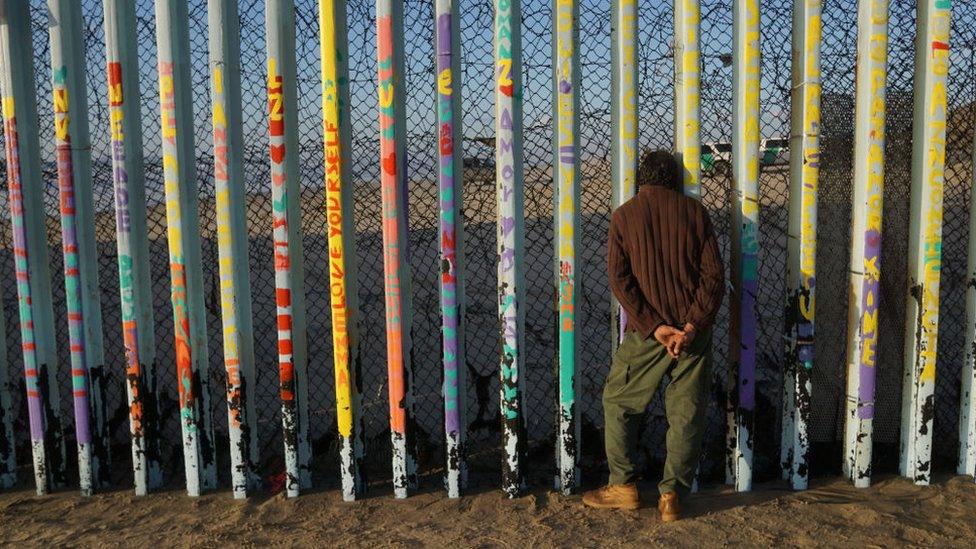
Walls have been built for thousands of years for many different reasons.
More recently, one wall in particular has been making headlines - US President Donald Trump's proposed wall to be built along the US-Mexico border.
The world leader wants to build a 3,000km-long, concrete wall along the border between the two countries. The idea is that it will be between nine and 16 metres high, and will prevent people from illegally crossing the border.
Newsround has been to the area to speak to the people who will be affected by the wall.
I would build a great wall, and nobody builds walls better than me, believe me, and I'll build them very inexpensively. I will build a great great wall on our southern border and I'll have Mexico pay for that wall.
Read on to find out about other famous walls that have left their mark on history.
Berlin Wall
The Berlin Wall was one of the most famous walls in modern history, dividing a nation for 28 years and playing a significant role in a conflict called the Cold War.
Back in the 1950s, Germany was split into two - East Germany and West Germany.
The country's capital Berlin was actually located in East Germany, but the city was portioned up between east and western powers too - and a wall put up between the two.
At first, it was just a fence, but it was soon filled with concrete and was up to 3.6 metres tall in some places.
The idea was the wall would stop people fleeing from poorer, Communist East Berlin (and Soviet rule) into Western Europe.
Many hundreds of people died trying to cross it in the hope of a better life on the other side.
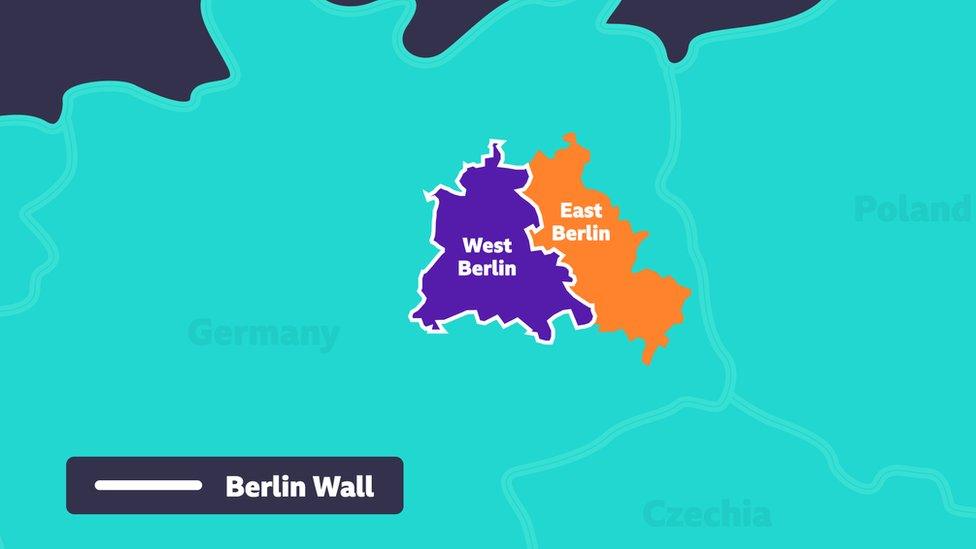
This map shows how the Berlin Wall was built around the outside of West Berlin
The Berlin Wall became a symbol of oppression and control inflicted by East Germany and the Soviets on its citizens.
The arrival of US President Ronald Reagan in 1980 and Soviet leader Mikhail Gorbachev in 1985 saw the east and west start to work together more in order to sort their differences and learn to coexist.
In November 1989, the border was declared open and people in Berlin began to tear the wall down.
To this day, the Berlin Wall - and what is left of it - remains a powerful symbol of the impact of division. Millions of tourists visit what's left of the wall each year.
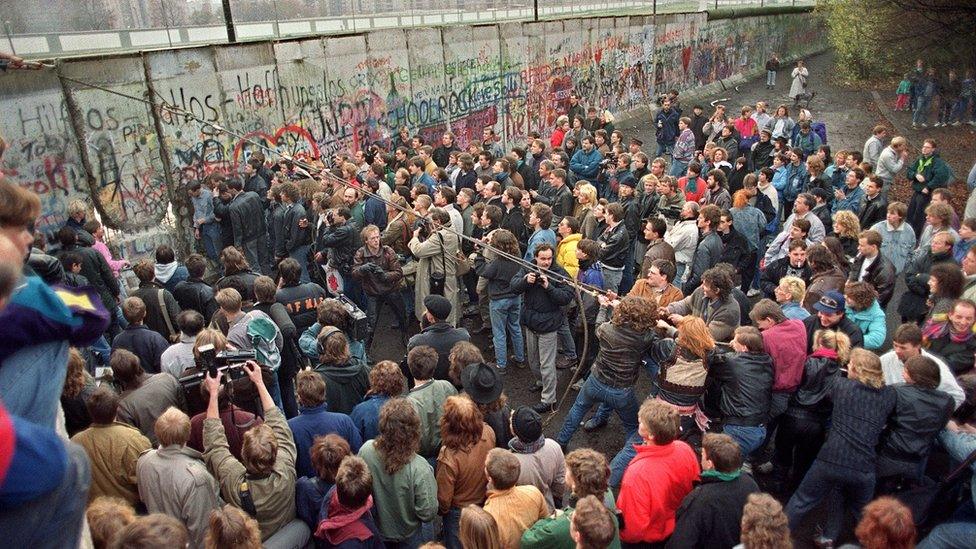
There were great celebrations as the Berlin Wall was torn down in 1989
Hadrian's Wall
In 122 AD, Emperor Hadrian ordered a wall to be built between the Solway and the Tyne to guard the north-west boundary of the Roman Empire. It was called Hadrian's Wall - and nowadays you can find it near to England's border with Scotland.
It was built within about six years and was around 120km long, separating the Romans from the Caledonian tribes north of the wall, with whom they didn't get on.
There were special forts at intervals along the wall so that Roman soldiers could protect their border.
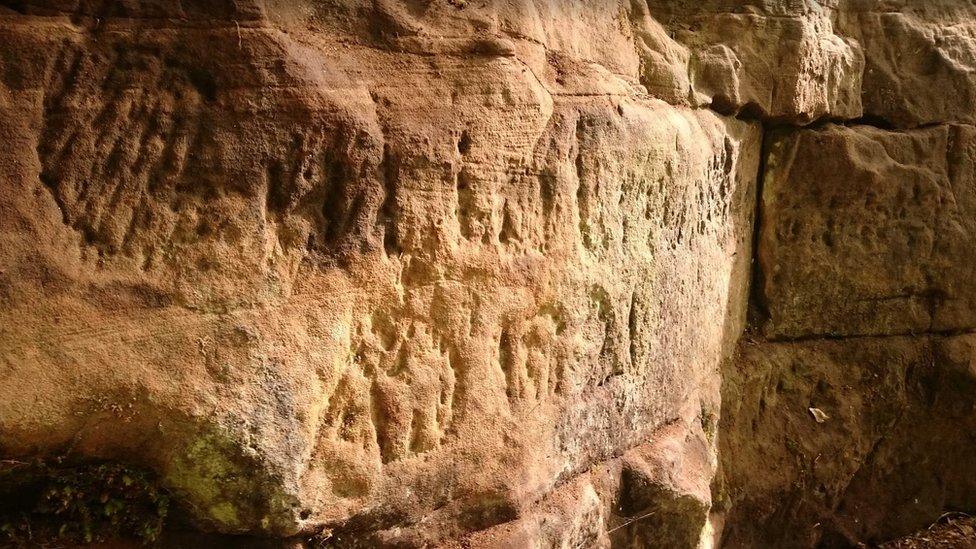
The 1800-year-old markings were made by Roman soldiers repairing Hadrian's Wall
'Graffiti' markings in rocks near to Hadrian's Wall have told archaeologists a great deal about the Roman soldiers who used to be stationed there.
Today, Hadrian's Wall is a World Heritage site.
The US and Mexico border was first formally established in a treaty in 1848.
Antonine Wall
The Antonine Wall in Scotland is perhaps not as famous as Hadrian's Wall, but is an important part of British history.
For a brief period, it marked the northernmost point of the Roman Empire.
It was built in around 142AD, but it was abandoned within 20 years.
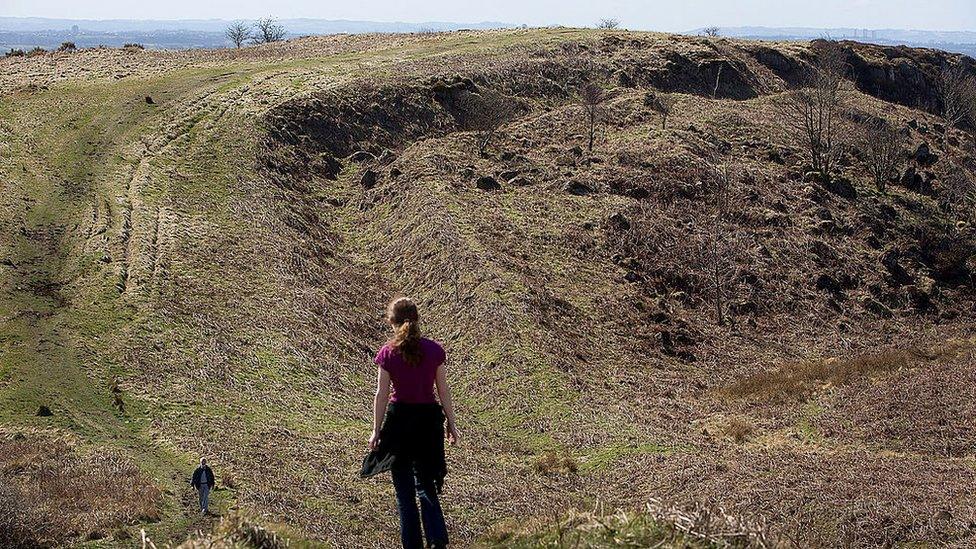
In this photo of the Antonine Wall, you can see defensive ditches around the wall
The Antonine Wall is 60km long and stretches across central Scotland from Old Kilpatrick in the west to Bridgeness in the east.
In October 2018, it was announced that both Hadrian's Wall and the Antonine Wall - both World Heritage Sites - would be given £2m of funding to restore and protect the landmarks for future generations.
Part of the money will be spent trying to find missing stones that have been taken over the last 1,500 years to build things like houses and churches.
Ros Kerslake, from the Heritage Lottery Fund, said: "These internationally important ancient monuments, and the fascinating history they tell, will be better understood and cared for by their communities well into the future."
The first fence along the border went up in 1945 in a bid to manage people wanting to cross over the border into the US from Tijuana and Ciudad Juarez in Mexico.
Great Wall of China
The Great Wall of China is one of the most impressive feats of building on Earth. Like the previous two walls on this list, it is also a World Heritage Site.
It is difficult to know exactly how long it is, but it is believed that it was once over 20,000km long.
Just as Hadrian's Wall created a barrier between the Romans and northern tribes, the Great Wall of China was erected to create a barrier between the civilised world and apparently less civilised tribes beyond.
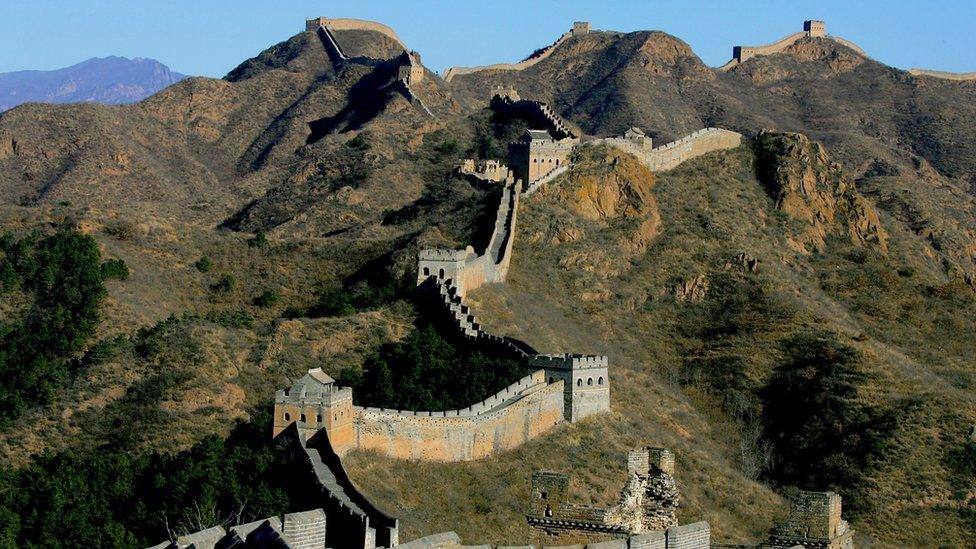
The Great Wall of China started to be built as early as 481BC
It started to be built as early as 481 BC and is more than seven metres high in most places. But it is the Ming Dynasty (between 1368 and 1644) which is credited for the incredible landmark as we know it today.
You can see where different sections have been built over the years, with some stretches made from stone, and others from earth and wood.
The Great Wall of China stretches from the Yellow Sea in the east near to Beijing, to the Gobi Desert, making it the world's longest man-made monument. There is a rumour that it is so big that you can see it from space, but this isn't actually true.
Nowadays, about one-third of the wall has disappeared due to, for example, erosion or people taking the building materials.
Drones are now being used to map out the wall and analyse weak points or areas that need restoring.
West Bank barrier
Another modern 'wall' that often makes headlines is a barrier erected by the Israeli government to separate Israel from the Palestinian population.
It is part-wall and part-fence, and is due to be 712km long, as it is still being constructed. According to UN figures, it is around 65% complete.
The Israeli government calls it a separation barrier, rather than a wall. It started to build it in 2002 after a wave of violence, saying that it was needed for security reasons to protect Israeli citizens from Palestinian violence.
But the barrier has proved controversial and its construction is regularly challenged by international law. Palestinians say the barrier is a way for Israel to grab land and the International Court of Justice has called it illegal.

This photo shows a section of the West Bank barrier
Israel and Palestine have a long history of conflict which has gone on for decades - and arguing over territory is at their heart of it.
In 1947, the UN voted for Palestine (which was under British rule at the time) to be split into two separate Jewish and Arab states, but the Arab side did not accept this. One year later, Jewish leaders declared the creation of the state of Israel and there has been fighting ever since.
Since the barrier started to be put up 15 years ago, security checks have become an ordinary - and sometimes difficult - part of everyday life for thousands of Palestinians needing to cross it to work in Israel.
Some say that the wall is punishing many people for the actions of a few and that it is creating more problems than it solves.
It remains controversial to this day. Both the West Bank barrier and the Berlin Wall have become famous for the graffiti and art that cover them - a lot of which references resistance and division.
- Published23 May 2019

